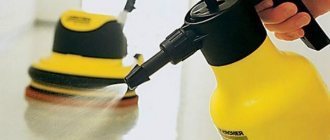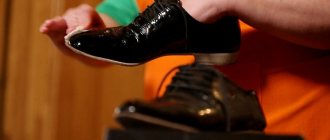Modern clothing and footwear made using special membrane material are becoming more and more accessible to a wide range of buyers.
If initially the membrane was used to create specialized lightweight, windproof and waterproof clothing for winter sports, today it is used to make everyday jackets and comfortable clothing for children and adults.
Features of the material
Membrane fabric is a breathable material made of synthetic fiber, which is characterized by a large number of tiny holes and is characterized by:
- Waterproof. The higher the number of this indicator, the better the membrane material resists moisture penetration. A coefficient of 10,000 indicates that the fabric will not get wet in heavy rain.
- Vapor permeability. The structure of the synthetic fabric is such that it allows steam to escape, removing excess heat and moisture from the body. This provides comfort during high physical activity in cold weather. The higher the vapor permeability index, the better the quality of the material.
- Windproof. The membrane reliably protects from wind.
The clothes use two-layer and three-layer membrane fabrics. The outer layer consists of ordinary matter, the inner layer is made of membrane fabric. There may also be a bottom layer of knitted mesh.
The membrane itself is not insulation; it creates comfort provided that a person moves intensively, generating heat. Therefore, a winter envelope for a newborn, clothes for a sedentary child, in addition to the membrane, must contain vapor-permeable synthetic insulation.
Membrane Processing Equipment
Many people are afraid to sew a membrane, since it is a rather slippery material that is difficult to move with a machine. To facilitate this process, you can use walking or Teflon feet.
- the walking foot (or upper conveyor) has a toothed rack and, unlike a regular foot, not only fixes the fabric, but also additionally advances it from above;
- a Teflon foot, unlike a regular metal one, does not pull the fabric and does not stick to it. It improves the sliding of the membrane and eliminates the need to constantly push and adjust the fabric with your hands.
For more information about the walking foot, watch the video instruction “Walking Foot for Sewing Membrane Fabric.”
What needles to sew the membrane with
Suitable needles are 90% of success in sewing outerwear. If the stitching turns out to be uneven and there are gaps, then in most cases the problem is not with the machine, but with the wrong choice of needle. For different sections and stages of sewing a product, you may need needles of different thicknesses and types. It is advisable to purchase several options from those that we will consider below in order to be able to compare them on your machine.
Needles for sewing outerwear:
- Leather needles - perfect for sewing thick membranes. To sew parts from one layer, it is better to take needles with a thickness of 90. For joining several layers, especially with insulation (for example, for finishing stitches in a finished product), needles with a thickness of 100 are more suitable;
- Microtex needles have a very sharp and thin point, which is why they are loved by many who sew outerwear. For sewing thick fabrics, a thickness of 90-110 is also suitable;
- Jeans needles - designed for working with dense materials. To sew a membrane, you should choose needles with a thickness of 90-110;
- universal needles - if the previous options were not found, then these needles will do. On thick places it is better to use a thickness of 100-110. To sew one layer of fabric, 90 is enough.
Share with friends:
Washing rules
In order not to spoil the high-tech material, you need to know how to care for membrane clothing. Synthetic fabric has a porous structure, and these tiny pores become clogged with sweat and dirt over time. A child's walks often result in dirty clothes, despite the applied impregnation with water- and dirt-repellent properties.
A contaminated membrane has reduced vapor permeability, so regular washing is necessary. But at the same time, membrane items should be washed as rarely as possible - any impact reduces the strength of the fibers and the functional properties of the material are lost over time.
To properly wash membrane clothing, follow these principles:
- Do not use fabric cleaning or bleaching products, primarily those based on chlorine - it destroys the membrane and the fabric will become wet;
- It is forbidden to wash with ordinary washing powder and liquid detergents, including those for delicate washing - they can clog the smallest pores, causing the material to stop releasing steam;
- washing items is allowed only at the temperature indicated on the product label (30-40 degrees depending on the type of material) - heating harms the structure of the fabric, for the same reason it is forbidden to boil or iron the product;
- For washing, it is allowed to use only special products marked “for sportswear” or “for membrane fabrics.”
When purchasing this type of clothing, it is recommended to immediately purchase a detergent for washing membrane fabrics - its price is quite high, but due to the economical consumption, the cost of one wash is low.
If you don’t have special equipment at hand, and you need to wash the membrane jacket urgently, you can use simple laundry soap. In this case, the item is not soaped, but dipped in warm soapy water. It is important to rinse the clothes several times and next time be sure to use a special product to remove any remaining soap from the membrane pores.
It is recommended to wash membrane clothes by hand. If the label says machine washable, select the delicate cycle.
When washing in a washing machine, be sure to program the lowest speed for rinsing and completely disable the spin option - rotating the item in the drum even at relatively low speeds leads to water mechanically damaging the structure of the porous material.
If the manufacturer has not indicated the possibility of machine washing, do not experiment - there is a high risk of material delamination, membrane destruction, deformation and damage to fasteners.
Note! To keep your jacket clean and wash it as little as possible, scrub dirty areas with clean warm water using a fluffy brush or foam sponge.
WRONG:
- Wash with powder. Washing powder in granules clogs the pores and the membrane simply stops working - air exchange is lost.
- Use detergents containing chlorine. Chlorine molecules will destroy the membrane.
- Use rinse aids and conditioners, they reduce the water-repellent properties of the fabric.
- Squeeze in a machine. The membrane requires careful handling. Standard washing modes can be detrimental to the membrane structure. Spinning causes irreparable damage to the fabric fibers; they stretch and tear.
- Dry on the radiator. The membrane does not tolerate high temperatures. When heated, the membrane tissue collapses and loses its properties.
- Use dry cleaning.
Hand wash technology
Let's look at how to wash a jacket with a membrane. When using special products, washing items without pre-soaking is allowed. But if the product is heavily soiled, it is dipped into a basin with a dissolved product and left for one and a half to two hours.
In order not to damage the product, when washing by hand, you should not rub items of clothing against each other, squeeze out the material, strongly deform it, or “collapse” inflated bubbles from waterproof fabric.
The most contaminated areas on the outside of the jacket (primarily the collar, cuffs) can be gently rubbed with a foam sponge or fluffy brush dipped in the water in which the clothes are washed.
To rinse the item, place it in a bowl of clean, cool water for 15-20 minutes. Then take it out, let the excess water drain, and then immerse it again in a basin with fresh clean, cool water. This time, carefully remember the jacket with your hands. It is recommended to rinse the washed item for the third time in water with a dissolved antistatic agent.
You cannot wring out membrane clothing - just let the excess water drain (you can put the item in a net and hang it over the bathtub). Then the jacket is straightened, all zippers are fastened so that they do not become deformed, and hung on hangers or a dryer.
Dry the product away from direct sunlight and heating devices. Do not dry it in the drum of a washing machine with dryer or in a special unit, use a hair dryer, fan heater or iron. Do not iron the membrane fabric.
Advantages and disadvantages of membrane clothing
Many adults believe in miracles; they believe that if they purchased an expensive membrane item, it will solve all their problems and will work in any conditions. They are especially indignant when children's overalls are purchased with the hope that their children's underwear will not become wet during active play outside and they will not freeze in frosty weather.
Let's remember the advantages of this clothing:
- The membrane item ideally protects from snow and rain, and gusts of wind.
- Lightweight - you really want to jump and gallop in it, enjoying a walk in the fresh air.
- Warm without any insulation - your body heats itself, the membrane prevents cold air from penetrating inside.
- Saving time and nerves - it is now much easier to send a child for a walk, there is no need to put several layers of clothes on him. And the child will not sweat, waiting for you while you get dressed.
- Due to the water-repellent film on the surface, dirt does not absorb into it; it is enough to simply wipe it with a sponge.
And now about the other side of the coin. The disadvantages of this mega popular clothing include the following:
- High cost - no comment.
- Special care is required: delicate washing and further impregnation with special sprays.
- Retains its unique properties for only a few seasons.
- You cannot wear regular underwear under it; the costs include purchasing thermal underwear and fleece items.
Having weighed all the pros and cons, the conclusion is obvious - everyone should have a membrane item. You just need to learn how to wash membrane clothes and understand how to properly care for them.
Rules of care
Caring for membrane clothing includes treating it with a water-repellent agent. A special spray is applied from a can onto the washed and dried item. It is important to choose the right aerosol - it should be intended specifically for membrane clothing. Impregnation allows you to maintain high water-repellent properties of the membrane material.
Follow the storage rules:
- Only washed items are placed in storage;
- there should be no strong-smelling substances nearby (mothballs, etc.);
- the storage place must be dry;
- suits and jackets are stored flattened.
With proper care of things, clothes made from membrane materials will last as long as possible.
Properties
The membrane has hydrophilic and hydrophobic components. It sounds complicated, but it's actually simple.
Hydrophilic means attracting water and managing moisture. That is, the fabric absorbs sweat and releases it outside, where evaporation occurs. In other words, it breathes, hence the term airtightness.
Hydrophobic property is when the membrane prevents water, such as rain from outside, from entering the jacket. Heat is retained inside and moisture comes out.
Ski overalls and jackets are made from this fabric.
The advantages of membrane clothing are that it is convenient to move around in it, it is light and comfortable, and you do not need to wear a ton of clothes. In addition, such things are easy to wash.
Shoes
In boots or shoes, the vapor-removing membrane layer is located between the outer covering of the shoe and the insulation. Despite the fact that the delicate high-tech material is protected on both sides, it remains sensitive to various types of impact:
- when shoes are constantly dirty and wet, the smallest particles of dirt can penetrate the outer layer and clog the pores of the membrane or form a vapor-proof film;
- heating is detrimental to the membrane inside the shoe;
- destruction is facilitated by aggressive chemicals - reagents used to treat roads and sidewalks in winter.
Caring for membrane shoes includes regular cleaning - it is recommended to remove dirt from their surface after each walk. It is important to follow the cleaning rules:
- membrane shoes or boots are carefully washed with warm (not hot) water, cleaned with a soft brush or cloth;
- heavy contamination is removed using liquid or bar toilet soap - household soap is aggressive for shoe materials;
- Shoes need to be thoroughly dried before wearing, since ice freezes on a wet surface at subzero temperatures and prevents the membrane from allowing steam to pass through.
Shoes containing membrane material should be washed, cleaned and dried according to the same principles as regular shoes. To dry shoes or boots, it is recommended to stuff them with crumpled newspapers.
To avoid damaging the membrane, do not use a special electric shoe dryer, place shoes or boots near a radiator or fan heater, or expose them to direct sunlight.
Seasonal shoes with constant wear in autumn, winter or spring must be treated regularly (about once a week) with a water-repellent spray. This will prevent contaminants from penetrating the membrane and deteriorating its functional characteristics.
Sealing (gluing) seams on membrane fabrics
Moisture can penetrate through seams (through needle holes), especially in areas of constant contact with water, wet snow, or in places with mechanical stress on the fabric (for example, backpack straps). To prevent this from happening, the seams are glued in the indicated places.
To glue the seams you will need:
- iron and Teflon nozzle;
- tape for sealing seams 20 mm wide;
- tailor's block or wooden block 20 mm wide.
The procedure for gluing the seam:
- We put on a Teflon nozzle.
- Heat the iron (select the “two points” mode).
- We place the part on the block (block), placing the seam in the center of the rib (the seam is glued from the inside).
- Cover the seam with the smooth side of the tape, so that the seam, allowance and fabric around the seam are under the tape.
- Press the tape with an iron for no longer than 10 seconds, so as not to melt the tape; it is better to reapply the iron than to overexpose it.
- Gradually, in small sections, go over the entire seam.
For a clear understanding of the process, see “How to glue seams on a membrane.”











